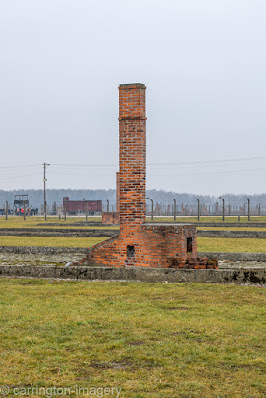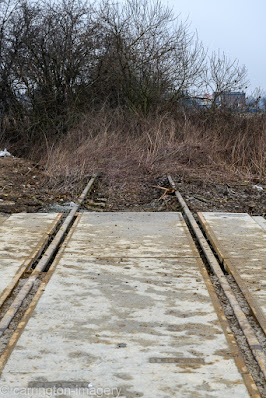Visiting the Wieliczka Salt Mine in January 2020
Continuing my 60th birthday celebrations in Poland my son and daughter had arranged for us to visit the Wieliczka Salt Mine on Sunday the 19th January 2020.
 |
The Main Building
|
This was another item on my bucket list. Both of the kids had visited the mine before and had tried to describe it to me. Trying to imagine the inside of the mine was extremely difficult so I was thrilled when they told me that this was going to be part of out visit to Poland.
We were due to be picked up by the Escape2poland minibus at 15:20 in the afternoon. I was a little surprised that we were going that late in the afternoon but I hadn't considered that we would be spending the visit underground so it really didn't matter what time we got there.
As our pick up wasn't until mid-afternoon it gave us the morning to explore some of Krakow. What a truly beautiful city it is. We only saw a very small part of it but we all decided that it would be great to return at a later date to visit the city and attempt to do it justice. We thought we might return mid 2021. Who knew what the impact of the Corona Virus was going to be?
We walked back from the Main Square and met our minibus at the collection point. As with the Auschwitz tour, the minibus from Escape2Poland was bang on time. We boarded the bus with a group of other UK tourists.
The journey to the mine took about 45 minutes and took us through some of the interesting parts of the city that the pedestrian tourists wouldn't normally see.
Arriving at the car park we followed our driver up a steep street lined with market stalls selling the usual tourist souvenirs and interesting things to eat. Crossing the road at the top hill we came face to face with the gates to the mine complex. The main mine building was in front of us illuminated in the darkness of the late afternoon light. We had arrived slightly earlier than expected so we had to wait for our English speaking guide to become available.
 |
Mine Building
|
We had about 15 minutes to wait which gave us a chance to have a quick look around and for me to grab a few photos of the buildings. I was a little apprehensive about the visit. My kids had told me of the long decent down a flight of wooden stairs to the first landing. This had got me worried especially as I have a particularly dodgy left knee which doesn't appreciate stairs. From a photography point of view it was also going to be difficult. The mine, as you would expect, was going to be dark; VERY DARK. Certain areas were dimly lit but otherwise not much illumination. It was going to be long shutter speeds and high ISO plus it was all going to be hand-held. Quite a challenge.
As we passed through the mine I attempted to photograph some of these exhibits, caverns and rooms. I have included my images in the blog, I'm quite pleased how the images turned out in such challenging circumstances. This not so much testament to the photographer but more to the performance of the remarkable Nikon D850 DSLR camera.
Our group was called forward and we met up with our guide. Another lovely Polish lady. We were given a radio receiver and a set of ear pieces each, After ensuring that we could all hear her we entered the main mine reception area. It was nice to be out of the cold and into the warm. However, as we were about to find out, cold really wasn't going to be an issue.
We were told that we would enter the mine complex by descending vis the Mikołaj Daniłowicz Shaft. This meant that we would descend using approximately 380 steps to level I which is about 64 metres. Passing through a surprisingly small door we started down the wooden steps. The staircase was separated into flights of 10-15 steps with a small landing at the end before turning 180 degrees to the next set of steps. Down and down we went. The temperature got warmer the further down we went.
 |
Looking down the wooden staircase
|
When we finally arrived at Level 1 our guide began to give us some statistics about our visit and about the mine. She explained that the length of the tour route would be about 3.5 kilometres, that the average temperature inside the mine was between 17 and 18ºC, that we would eventually drop down another 2 levels to a final depth of 135 metres. The next thing she said was music to my ears, The return to the surface is by lift from Level III (135 m). This was good as I really wasn't sure if my dodgy knee would make the climb back by stairs.
It's not really the purpose of this blog post to go into the history and the full detail of the mine suffice it to say that it has been in existence since the 11th century and that the salt produced by the mine has been important to the economy of the area and of Poland for some considerable time. Full details of the of the history of the mine can be found on the mines website The “Wieliczka” Salt Mine
There are many caverns and rooms carved into the salt walls and these are a feature of the mine. The mine workers carved various chapels into the walls for the purpose of worship the biggest of which is St. Kinga's Chapel, a cavernous cathedral is the depths of the mine. There are also various other carvings and monuments carved into the mine walls including a monument to Nicolaus Copernicus an astronomer, doctor, translator, economist, military commander. He was one of the first guests who visited the Wieliczka Mine. The salt sculpture depicting Nicolaus Copernicus was unveiled on the 500th anniversary of the birth.
 |
| Monument to Nicolaus Copernicus |
We continued to descend down towards Level three, passing through caverns and tunnels lined with salt rock walls. We were encouraged to touch the walls and taste the salt on our fingers. In each exhibition area we stopped and our guide explained where we were and what took place there.
 |
Mine Exhibit
|
At Level 2 the temperature had risen to a point where people had begun to remove their outside coats, hats and scarves. It was incredible. At the surface it was a wintry 2ºC but down here it was like a warm spring day.
 |
One of the smaller chapels in the mine
|
At every turn there was something that was more remarkable than the last thing you saw. It was hard to believe that people of all ages worked in this place, mining salt, by nothing more than candlelight, We don't know we're born !!
 |
Mineworker Exhibit
|
Just when I though I couldn't be any more amazed we arrived at Level 3. Our attention was drawn to a gap in the salt wall that, at first sight, appeared to be a balcony overlooking a cavern. When we approached the gap we realised we were looking over the top of the balcony into a vast carved church. Lit by salt rock chandeliers hanging from the high roof the chapel is enormous. My images really don't convey the sheer size and the magnitude of this place. What we were looking at was St Kinga’s Chapel. I'd heard so much about this place but all that I heard paled into insignificance against actually standing here overlooking the chapel.
 |
Looking into St.Kinga's Chapel from the balcony.
|
According to the Wieliczka website "It is said that the temple was created by three sculptor miners: Józef Markowski, Tomasz Markowski and Antoni Wyrodek, but in reality, there were more artists, because the new generations of miners are constantly adding something to each other. Visiting the Tourist Route, you will learn about the history of the chapel and the unusual works of art made of rock salt".
We descended into the chapel by a staircase carved into the rock. Standing at floor level in the chapel you really get a sense of the size of it. There are statues and carvings throughout the chapel and our guide allowed us some extra time here to give us chance to explore more thoroughly. We made a point of trying to see as much as we can. Because of the huge chandeliers there was a little more light than in other places in the mine so I did manage to grab some interesting shots here.
 |
| Chandelier |
 |
St. Kingas Chapel
|
 |
The Last Supper Carving
|
 |
Salt Statue of the Pope
|
St Kinga’s Chapel was the last destination on the actual tour and from here we made our way through a beautiful lagoon with greenish blue water coloured by the salt in the water.
 |
Lagoon
|
From the lagoon we moved on to the gift shop. A gift shop !! 135 metres below the ground in a salt mine was a gift shop. We spent about 10 minutes here buying some souvenirs before we were called to start making our way back to the surface. We knew we'd be taking a lift back to the surface but as we made our way there we stopped by another area. Through a door we were shown a concert hall which was carved out of the rock down here at 135 metres. Here all sorts of events take place including Christmas Carol concerts, Operas and various other events.
Finally we moved up another set of stairs to the entrance to the same lifts as the miners used. The lifts take about 10 people at a time and can be quite claustrophobic. We crammed in and the cage door was closed. The lift ascended at considerable speed. At the top we handed in our radio receivers and threw our ear pieces into a bucket. What an experience!! The tour lasted over two hours but it passed so quickly.
If you decide to visit Krakow then I can highly recommend that you allow some time to visit Wieliczka Salt Mine. It's totally awe inspiring and well worth the time. I can also recommend Escap2Poland as an internal tour company. They were punctual, courteous and reasonably priced.
Once again my thanks to my Daughter Becki and my Son Ben for this unforgeable experience.





























































